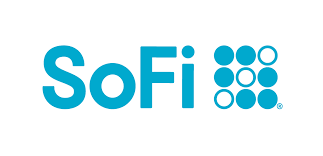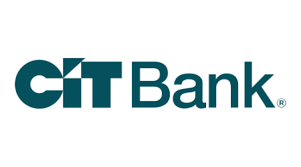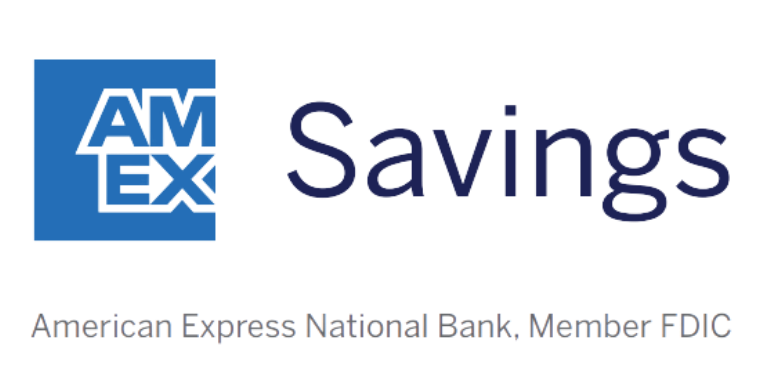Interest rates are more meaningful once you understand how they translate into dollars in your pocket. Running the numbers can tell you how much of a financial gain you can expect when you put your money into any particular account.
How to calculate savings rate
Interest can be calculated in two ways: simple interest and compound interest. To calculate simple interest, use the formula a = r * t * p where a is the amount of total interest you will earn, r is the rate, t is the time period, and p is your principal (the account balance). Just remember that percentages are expressed as two (or more) digits past the decimal point (2% is .02, and 2.5% is .025) and when we're talking about an annual interest rate, the time period is one year.
For example, if you have $1,000 in an account that earns 1%, the formula is
a = 0.01 x 1 x 1,000
a = 10 (this is the number of dollars you'll earn)
Simple interest is easy to calculate and can give you a good idea of how much you'll earn. But with a savings account, you'll actually earn a little more. That's because savings accounts pay interest more than once a year. Instead of simple interest, you'll earn compound interest, and that's a better deal for you.
How to calculate compound interest
Interest rates on a savings account are calculated more frequently than just once a year. Each time it's calculated, the interest is added to your balance. The next time interest is calculated, you have a bigger principal balance to use in the equation.
Using the same example, let's say that interest is compounded monthly. That means that instead of earning 1% per year, you earn one-twelfth of one percent per month.
a = 0.083 x 1 x 1,000
At the end of one month, you will have $1,000.83.
Now it gets better. In the second month, you will earn the same 1/12% but you get to multiply it by the bigger balance:
a = 0.083 x 1 x 1,000.83
At this point you're already earning interest on your interest. Your balance at the end of month two is $1,001.67, which is one penny more than you would have earned with simple interest on the same amount.
If you leave this money in the bank for 10 years and the rate doesn't change, you will have $1,104.20. Conversely, if you put the money into an account that earns simple interest, the balance will only grow to $1,100 in the same amount of time.
The more money you put into your savings account, the more it matters whether the account pays simple or compound interest. Compounding interest will help you hit each savings goal faster. The vast majority of savings and money market accounts pay compound interest. Some certificates of deposit (CDs) earn simple interest.
Compare savings rates
Make sure you're getting the best account for you by comparing savings rates and promotions. Here are some of our favorite high-yield savings accounts to consider.
| Account | APY | Promotion | Next Steps |
|---|---|---|---|

Open Account for SoFi Checking and Savings
On SoFi's Secure Website.
Rating image, 4.50 out of 5 stars.
4.50/5
Our ratings are based on a 5 star scale.
5 stars equals Best.
4 stars equals Excellent.
3 stars equals Good.
2 stars equals Fair.
1 star equals Poor.
We want your money to work harder for you. Which is why our ratings are biased toward offers that deliver versatility while cutting out-of-pocket costs.
|
up to 3.80%²
Rate info
You can earn the maximum APY by having Direct Deposit (no minimum amount required) or by making $5,000 or more in Qualifying Deposits every 30 days. See SoFi Checking and Savings rate sheet at: https://www.sofi.com/legal/banking-rate-sheet.
Min. to earn: $0
|
New customers can earn up to a $300 bonus with qualifying direct deposits!¹
|
Open Account for SoFi Checking and Savings
On SoFi's Secure Website. |

Open Account for CIT Platinum Savings
On CIT's Secure Website.
Rating image, 4.50 out of 5 stars.
4.50/5
Our ratings are based on a 5 star scale.
5 stars equals Best.
4 stars equals Excellent.
3 stars equals Good.
2 stars equals Fair.
1 star equals Poor.
We want your money to work harder for you. Which is why our ratings are biased toward offers that deliver versatility while cutting out-of-pocket costs.
|
4.10% APY for balances of $5,000 or more
Rate info
4.10% APY for balances of $5,000 or more; otherwise, 0.25% APY
Min. to earn: $100 to open account, $5,000+ for max APY
|
Earn a bonus of at least $225 after a one-time deposit of $25,000+.
Transfer a one-time deposit of $25,000-$49,999.99 for a bonus of $225. Transfer a one-time deposit of $50,000+ for a bonus of $300. Account must be opened with code PS2025 while this promotion lasts, and funded within 30 days. Bonus will be fulfilled within 60 days from the funding date. There is no period of time where the customer will be required to maintain the funds. Account must be open when bonus is credited. One bonus per account and primary customer. Bonus will be credited into the Platinum Savings Account that fulfills the funding requirement. Funding can be deposited all at once or incrementally.
|
Open Account for CIT Platinum Savings
On CIT's Secure Website. |

Open Account for American Express® High Yield Savings
On American Express's Secure Website.
Rating image, 4.00 out of 5 stars.
4.00/5
Our ratings are based on a 5 star scale.
5 stars equals Best.
4 stars equals Excellent.
3 stars equals Good.
2 stars equals Fair.
1 star equals Poor.
We want your money to work harder for you. Which is why our ratings are biased toward offers that deliver versatility while cutting out-of-pocket costs.
|
3.70%
Rate info
3.70% annual percentage yield as of April 10, 2025. Terms apply.
Min. to earn: $0
|
N/A
|
Open Account for American Express® High Yield Savings
On American Express's Secure Website. |
SoFi disclosure:
¹ New and existing Checking and Savings members who have not previously enrolled in Direct Deposit with SoFi are eligible to earn a cash bonus of either $50 (with at least $1,000 total Direct Deposits received during the Direct Deposit Bonus Period) OR $300 (with at least $5,000 total Direct Deposits received during the Direct Deposit Bonus Period). Cash bonus will be based on the total amount of Direct Deposit. Direct Deposit Promotion begins on 12/7/2023 and will be available through 1/31/26. See full bonus and annual percentage yield (APY) terms at sofi.com/banking#1.
² SoFi members who enroll in SoFi Plus with Direct Deposit or by paying the SoFi Plus Subscription Fee every 30 days or with $5,000 or more in Qualifying Deposits during the 30-Day Evaluation Period can earn 3.80% annual percentage yield (APY) on savings balances (including Vaults) and 0.50% APY on checking balances. There is no minimum Direct Deposit amount required to qualify for the stated interest rate. Members without either SoFi Plus or Qualifying Deposits, during the 30-Day Evaluation Period will earn 1.00% APY on savings balances (including Vaults) and 0.50% APY on checking balances. Only SoFi Plus members are eligible for other SoFi Plus benefits. Interest rates are variable and subject to change at any time. These rates are current as of 1/24/25. There is no minimum balance requirement. Additional information can be found at http://www.sofi.com/legal/banking-rate-sheet. See the SoFi Plus Terms and Conditions at https://www.sofi.com/terms-of-use/#plus.
³ We do not charge any account, service or maintenance fees for SoFi Checking and Savings. We do charge a transaction fee to process each outgoing wire transfer. SoFi does not charge a fee for incoming wire transfers, however the sending bank may charge a fee. Our fee policy is subject to change at any time. See the SoFi Checking & Savings Fee Sheet for details at sofi.com/legal/banking-fees/.
⁴ SoFi Bank is a member FDIC and does not provide more than $250,000 of FDIC insurance per depositor per legal category of account ownership, as described in the FDIC’s regulations.
Any additional FDIC insurance is provided by the SoFi Insured Deposit Program. Deposits may be insured up to $3M through participation in the program. See full terms at SoFi.com/banking/fdic/sidpterms. See list of participating banks at SoFi.com/banking/fdic/participatingbanks.
⁵ We’ve partnered with Allpoint to provide you with ATM access at any of the 55,000+ ATMs within the Allpoint network. You will not be charged a fee when using an in-network ATM, however, third-party fees incurred when using out-of-network ATMs are not subject to reimbursement. SoFi’s ATM policies are subject to change at our discretion at any time.
⁶ Early access to direct deposit funds is based on the timing in which we receive notice of impending payment from the Federal Reserve, which is typically up to two days before the scheduled payment date, but may vary.
⁷ Overdraft Coverage is limited to $50 on debit card purchases only and is an account benefit available to customers with direct deposits of $1,000 or more during the current 30-day Evaluation Period as determined by SoFi Bank, N.A. The 30-Day Evaluation Period refers to the “Start Date” and “End Date” set forth on the APY Details page of your account, which comprises a period of 30 calendar days (the“30-Day Evaluation Period”). You can access the APY Details page at any time by logging into your SoFi account on the SoFi mobile app or SoFi website and selecting either (i) Banking > Savings > Current APY or (ii) Banking > Checking > Current APY. Members with a prior history of non-repayment of negative balances are ineligible for Overdraft Coverage.
Savings account APY
When you see the interest rate for a savings account, you'll probably see the letters APY next to the rate. That stands for annual percentage yield. It's a way of showing you how much you'll earn after compounding is taken into account. APY is always a little bit higher than the interest rate. If the APY is 1%, the annual interest rate is about 0.9901%.
You can calculate your savings account APY with the formula APY = (1 + r / n)n where r is the interest rate and n is the number of compounding periods that occur within a year (12 if interest is paid monthly, 365 if interest is paid daily). To calculate APY based on daily compounding, you'll need to use a calculator that can handle high exponents.
How to get the best savings account interest rates
Getting a good interest rate on your savings is one of the easiest money challenges you can take on. That's because unlike checking accounts and credit cards, there aren't a lot of bells and whistles to compare on savings accounts. Identify the best savings account and apply. It's your money. Change banks if you qualify for a more lucrative offer.
The essential factors to weigh include:
- Interest rate: A high-yield savings account pays more than a traditional savings account.
- Fees: Avoid paying a monthly maintenance fee because it diminishes your earnings.
- Access: Most people's needs are met with online access, but it might take a day or two for transferred funds to reach your checking account if that account is at a different financial institution. For immediate access all the time, find a savings account that comes with a debit card and fee-free ATM withdrawals at machines near you.
- Alternative account types: A money market account combines the convenience of a checking account with the higher earning potential of a savings account. Not all money market accounts pay high interest. A certificate of deposit account often pays as much or more than a high-yield savings account but you won't be able to access the money for a period of time (ranging between one month and five years, usually). Early withdrawals might be subject to penalties.
Saving money is something you can be very proud of. Reward yourself for that effort by finding the account that will make your money work as hard as you do to increase your wealth.
Many people are missing out on guaranteed returns as their money languishes in a big bank savings account earning next to no interest. Motley Fool Money's top savings account picks can earn you more than 10x the national average savings account rate.
FAQs
-
To calculate the interest you will earn on your savings, use the formula a = r * t * p where a is the amount of interest you will earn, r is the interest rate your bank pays, t is the amount of time that passes each time your financial institution calculates interest, and p is your principal, or the balance in the account.
Banks typically calculate interest either daily or monthly, so divide your interest rate by 365 (daily) or 12 (monthly) and let your time period, t, remain 1.
-
The best way to maximize interest on your savings is to keep your funds in savings accounts that pay the best rates. You may want to review rates once a year to be sure you're happy with yours. Don't be afraid to change banks if it means a measurable improvement in your bottom line. Changing savings accounts is easy. Open a new account, transfer your money to it, and close the old account. Add funds to your account regularly, and leave the money in the account so that it can earn the most interest possible.
We're firm believers in the Golden Rule, which is why editorial opinions are ours alone and have not been previously reviewed, approved, or endorsed by included advertisers. Motley Fool Money does not cover all offers on the market. Motley Fool Money is 100% owned and operated by The Motley Fool. Our knowledgeable team of personal finance editors and analysts are employed by The Motley Fool and held to the same set of publishing standards and editorial integrity while maintaining professional separation from the analysts and editors on other Motley Fool brands. Terms may apply to offers listed on this page. APYs are subject to change at any time without notice.